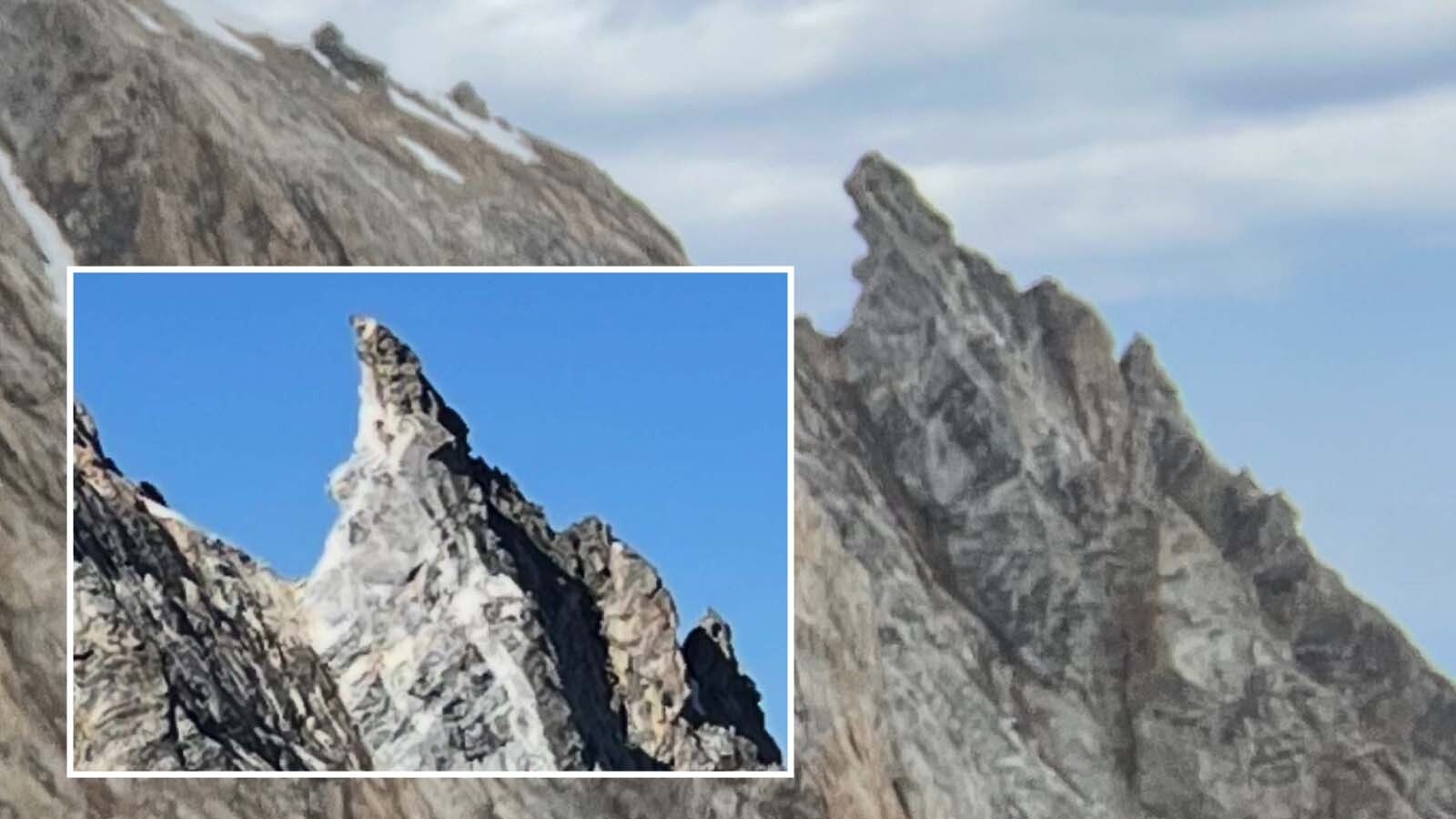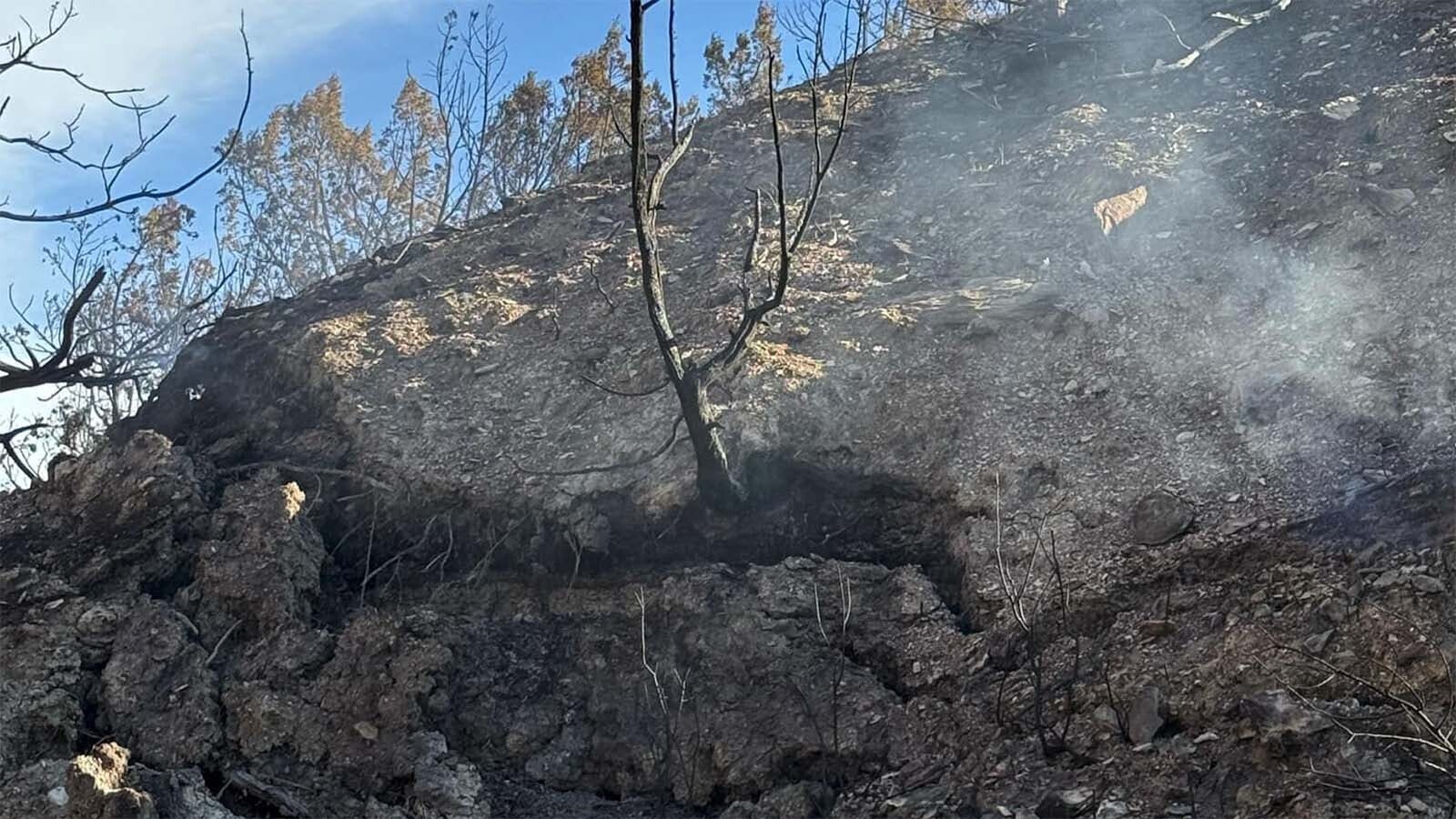He’s a mule deer buck the likes of which Wyoming has hardly seen in decades, but nobody knows where “The King” goes during the summer and autumn months.
It’s not even known for sure whether he survived this past brutal winter, which might have killed half of the Wyoming Range mule deer herd, including upward of 90% of the deer in his age class.
“The bad thing is, we probably won’t know until early December if he died. I think if he doesn’t show up in December, he’s probably gone,” Blake Fegler of Shoshoni told Cowboy State Daily on Tuesday.
Fegler took some of the last known video of The King in December on winter range in western Sublette County.
“I saw some pictures of him from mid-January, and he looked pretty rough,” said Fegler, who runs 307 Pursuit, a Wyoming guide service that specializes in hunts for gravely ill or disabled youth, as well as disabled veterans.
The ‘399’ Of Deer
The King started getting attention about three years ago, Fegler said. Hunters and wildlife watchers started sharing photos and videos of him on various social media platforms.
The buck was noteworthy not only because of his exceptional antler size, but because of a unique “drop tine” on the right side of his rack. Meaning, one of the points on his antlers nearest his brow goes straight down, rather than pointing upward as usual.
And his fan base kept growing.
Wyoming has had a few critters attain celebrity status, most notably Teton National Park’s beloved “Grizzly 399,” who wowed the world when she emerged from hibernation this spring with a new cub.
Recently, it seemed that The King was getting his shot at becoming the 399 of mule deer.
“Last year, he kind of blew up on social media,” Fegler said. “It became kind of a chain reaction. Somebody would post a photo or video and somebody would share it, and then somebody else, and then more people.”
‘Nobody Knows Where He Summers’
But The King also is evasive. He’s only been seen on his winter range through until shedding his antlers in the spring. Bucks shed their antlers in the spring, and start growing a new set throughout the summer, typically larger than the last set.
And where The King goes after shedding his antlers is a mystery. He typically slips away and isn’t seen again until December.
“The thing is, nobody knows were he summers,” Fegler said.
“Most of his winter range shuts down to all vehicle traffic, and after he sheds his antlers, nobody can pick him out or tell where he went. He could go 5 miles to summer range, or he could go 150 miles,” he said.
Moreover, The King has also figured out how to stay hidden during hunting season in the late summer and fall, so his head has yet to grace a lucky hunter’s wall.
On Par With The Legendary Trio
Just how big is The King?
That’s not exactly certain either, Fegler said. But there’s no dispute that he’s huge.
The most recent set of his shed antlers to be recovered scored 225 inches in the Boone and Crockett non-typical mule deer category.
Boone and Crockett (B&C) is the world’s premier fair chase big game trophy archiving organization. Scores on mule deer antlers are calculated through a compilation of measurements. Some of those include the number of inches of spread between the antlers at their widest point and measurement of girth at various points along the antlers’ main beams.
“Non-typical” refers to sets of antlers with unusual features, such as The King’s drop-tine.
A score of 225 puts him comfortably in B&C’s record book territory for non-typical mule deer: 215 for the awards category, and 230 for the all-time category.
And he’s probably grown since those shed antlers were officially scored, Fegler said.
Based upon Fegler’s estimation of The King’s size the last time he saw him, “The lowest I could see him scoring is 245, and he could even surprise a guy and hit 255,” he said.
Fegler said he’s seen a buck on the Sublette County winter range that might be even larger, but The King’s dramatic drop-tine is his major selling point.
B&C antler scores in that estimated range could put The King on par with Wyoming’s legendary trio of mule deer buck – Popeye, Morty and Goliath. They wowed people in the 1990s and are still talked about.
Goliath was killed by a hunter, while Popeye and Morty gave hunters the slip until they died of old age.
But Did He Make It?
The King belongs to the Wyoming Range mule deer herd, which was one of the hardest hit during this past, brutal winter. It’s thought that nearly all of the herd’s fawns died as deep snow and plummeting temperatures persisted well into March and April.
There was a death rate of up to 90% in radio-collared deer in The King’s age class, which Fegler estimates to be about 6 years old.
“Collared deer are only a small percentage of all deer,” but tracking collared deer can provide at least some insight into how the general population fared.
“There could have been only a 15% survival rate in The King’s age class,” Fegler said.
That leaves the big buck’s fan base waiting and wondering. He might appear again, as usual, on the winter range in December. Or, he might have gone the way of the Wyoming’s other legendary muleys.
Mark Heinz can be reached at mark@cowboystatedaily.com.





